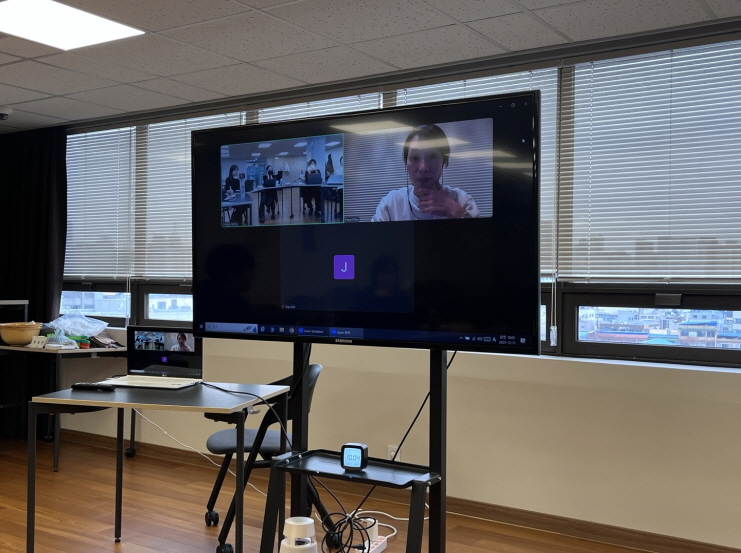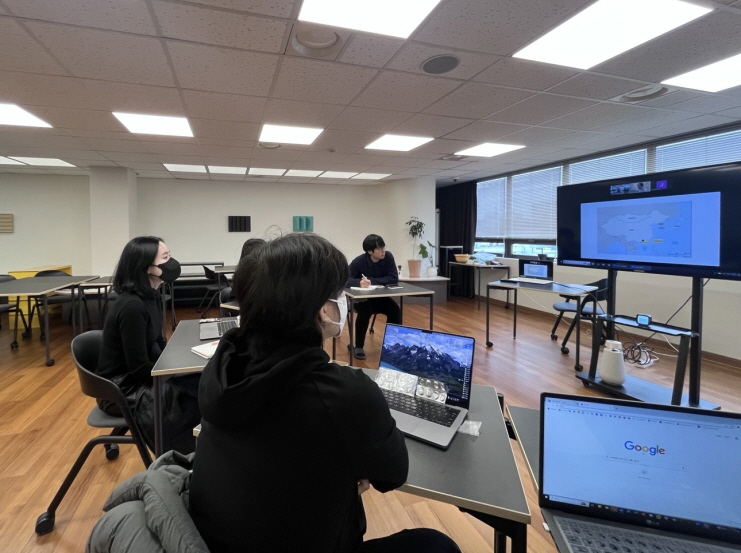Seminar Ⅸ - Freya Chou
Seminar Ⅸ - Freya Chou
It was especially memorable for me to talk candidly with Freya Chou—a curatorial team member at international-level biennials—about the art world situations represented by the biennials and the process of “growing” as a professional curator. Based on my impression that while there obviously is a profession of curator, we see an absence of ways to become a curator, I asked about the matter of the curator’s expertise. Freya talked passionately and in detail about her work—everything from contacting artists to producing and installing work—and the encouragement I got from her in terms of not losing courage was a good opportunity for me to really recommit myself.
- Yurmyurng Kim
During this seminar, I heard Freya Chou talk about the process of co-organizing Small World, and it gave me ideas on how to organize an international exhibition that emphasizes the geographical characteristics of its setting while also using timely discourse and persuasive media to create something really immersive and absorbing. There were three themes that she emphasized in Small World: scale, time, and music. Listening to her talk about the exhibition, I sensed how she was specifically imagining Taiwan’s scale as contrasting with China’s or the West’s in political and economic terms, while also relating that scale to the existential meanings explored by relatively small-scale communities (individuals and intimate minority-centered gatherings rather than large ones at the global, national, or city scale) since the pandemic. I found it fascinating how she amplified the relationship between “time and music,” in the sense that by forming a space for appreciating and enjoying that music, she was creating an experience where Taiwanese people could form spiritual bonds with the other visitors. She made the deliberate move of including almost no text on the walls in order to reduce the proportion of text (which was also true for the catalog later on), and I could see that she had developed a different kind of exhibition strategy where she was limiting the scope of appreciation to the time and space itself while emphasizing the practical experience that was taking place there. I also found her method of commissioning and exhibiting new work to be interesting. She spent around one year—which (according to her) is relatively short for biennial preparations—requesting new work by 10 artists. Rather than presenting definite commissions from the outset, she talked about sharing some very abstract themes with the artists, receiving various concepts for new work as the artists provided their own feedback, after which they worked together to refine the actual sentences and themes. As the new work was being established and the exhibition theme was being constructed, she introduced old and new works by other artists that were close to that larger strand. It felt a bit like drawing an imaginary tree on a piece of paper and then filling it up with various types of branches and fruits. This seminar provided an up-close experience with the importance and significance of international exhibition planning, which was something that had felt very weighty and distant to me before.
- Jinju Kim
Freya Chou, who was co-organizer of the 2023 Taipei Biennial, shared information about the art scenes in Taiwan and Hong Kong and her experiences as a non-Western, East Asian curator organizing a biennial that addressed supranational themes. Unfortunately, I wasn’t able to see the Taipei Biennial for myself, but from what Freya Chou discussed, it sounds like the Small World exhibition—which was held shortly after the pandemic—focused on the ambiguity of global connection and disconnection and the small-scale sense that arose over the course of that pandemic. As she was planning the Taipei Biennial, she focused a lot on “rebuilding sensibility.” As part of that practice, she adopted an approach where she reduced the burden of having to read a lot of text in the gallery, opting instead to upload interviews, essays, and such to a journal corner on the website. The exhibition catalogue also deviated from the conventional style and was presented instead in a photo essay format. While she was talking about the process of selecting the work to be exhibited at the biennial, I especially recall the example of the Palestinian artist Samia Halaby. When she selected Halaby’s work, Chou was in a situation where she had to coordinate the message that the artist was conveying with the geopolitical position of East Asia, and her choice as planner was to respect the artist and her work.
- Jaemin Shin



